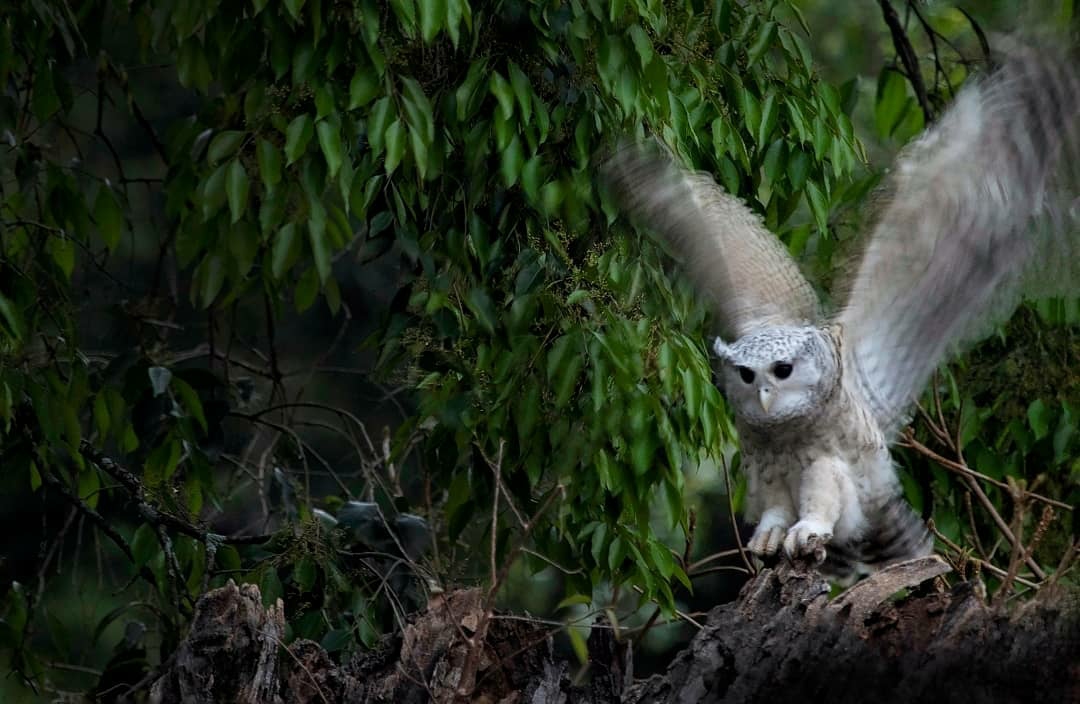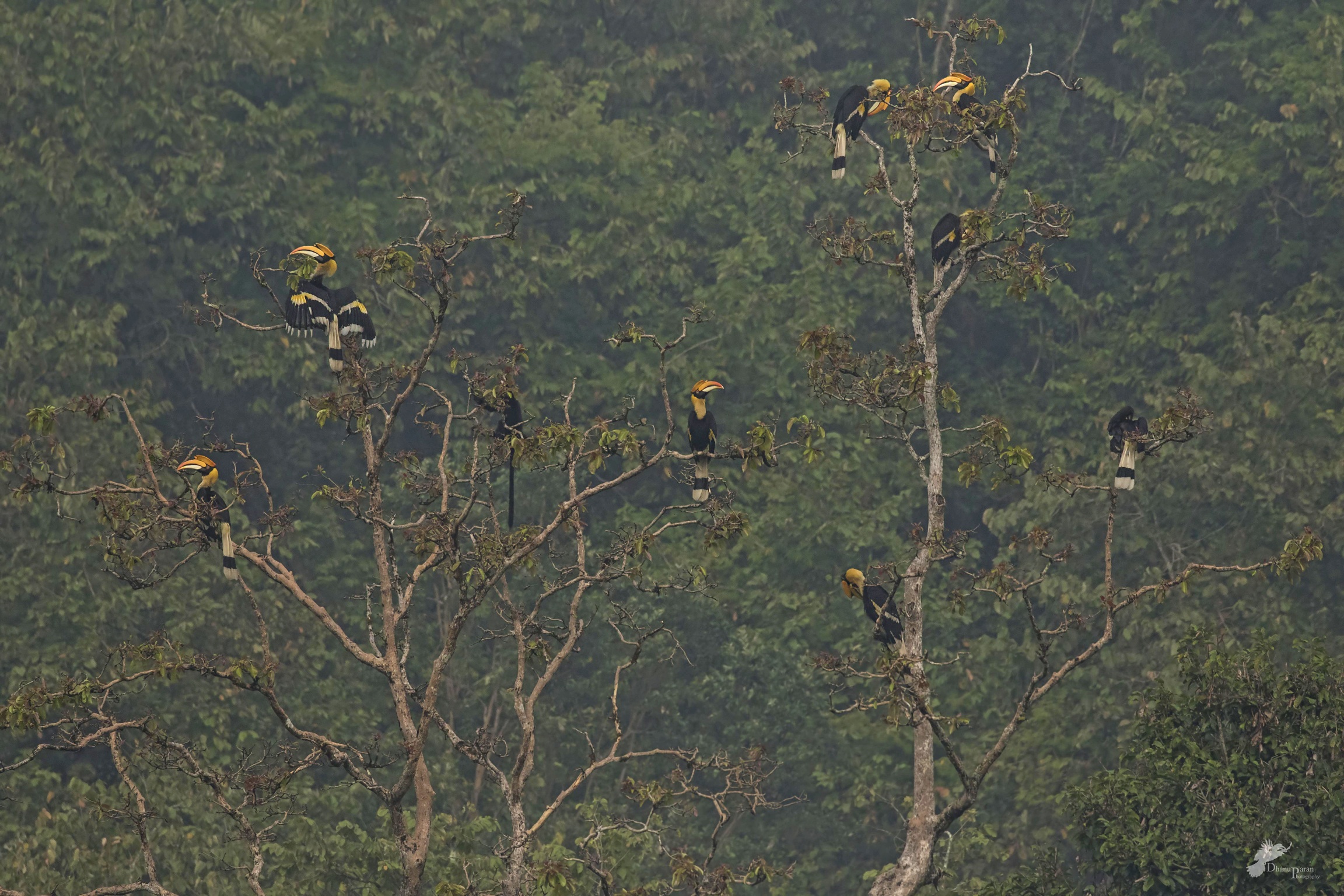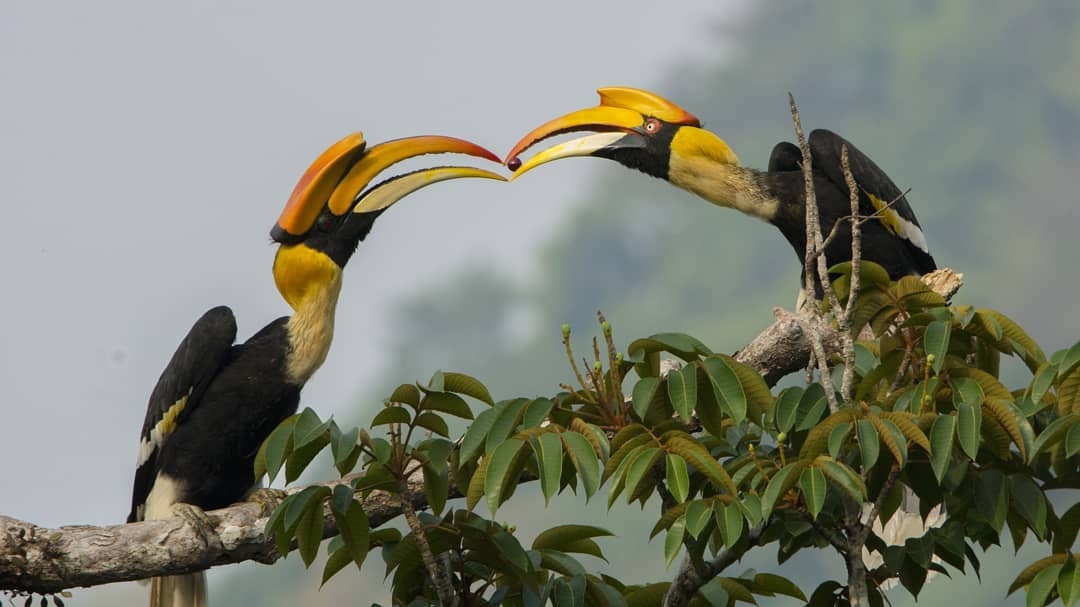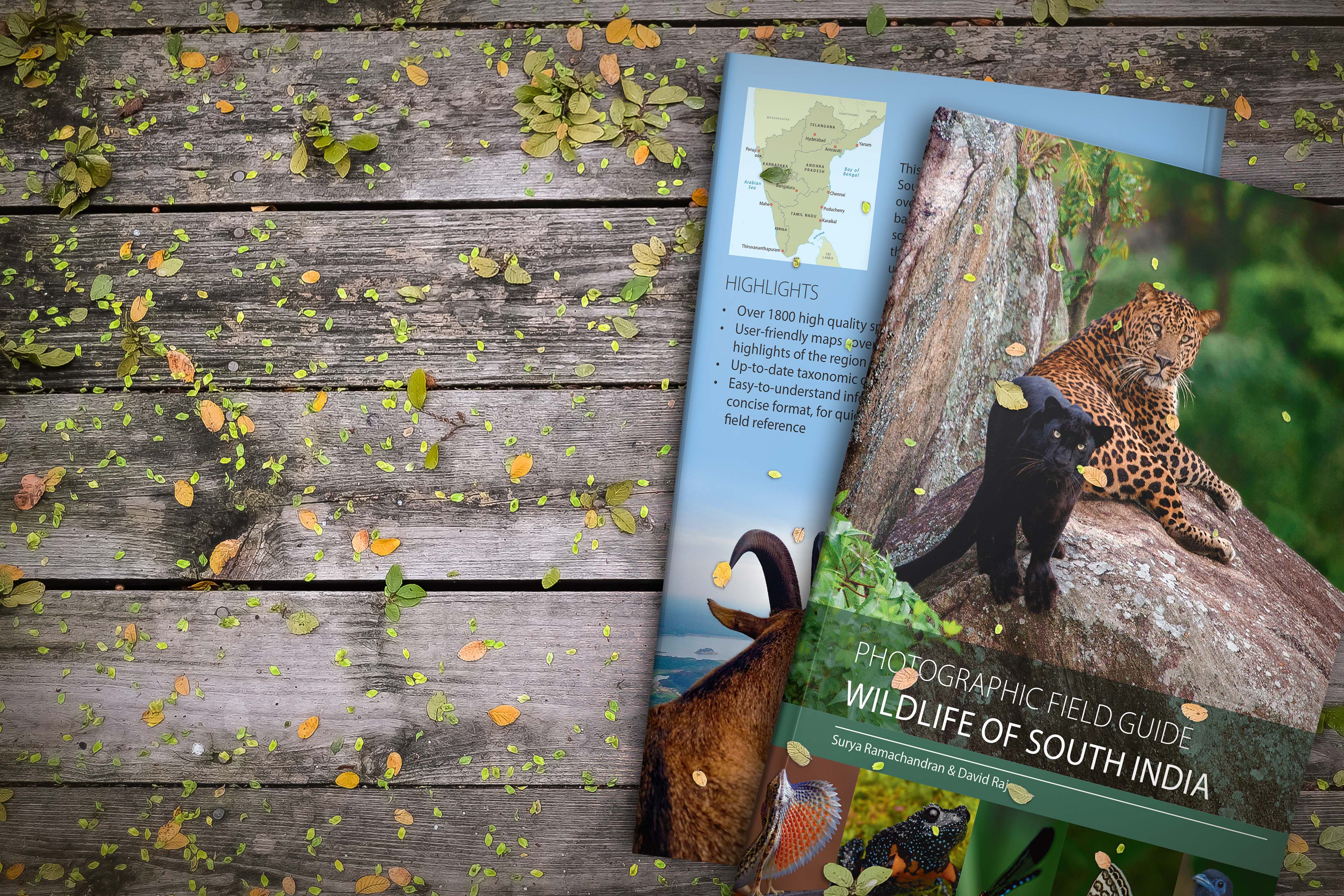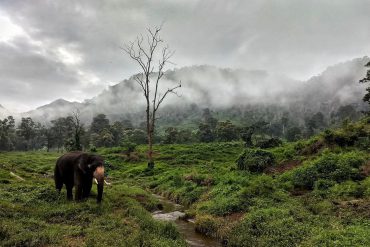The world of owls has always fascinated me. Their ability to thrive in multiple habitats, ranging from the rainforests to the high Himalaya to the beaches, is quite incredible. Some species have adapted to dominate the darkness of the night, a few others love the transitionary crepuscular periods and some, interestingly, have gone off-the-beaten-owl-track and turned themselves into day hunters.
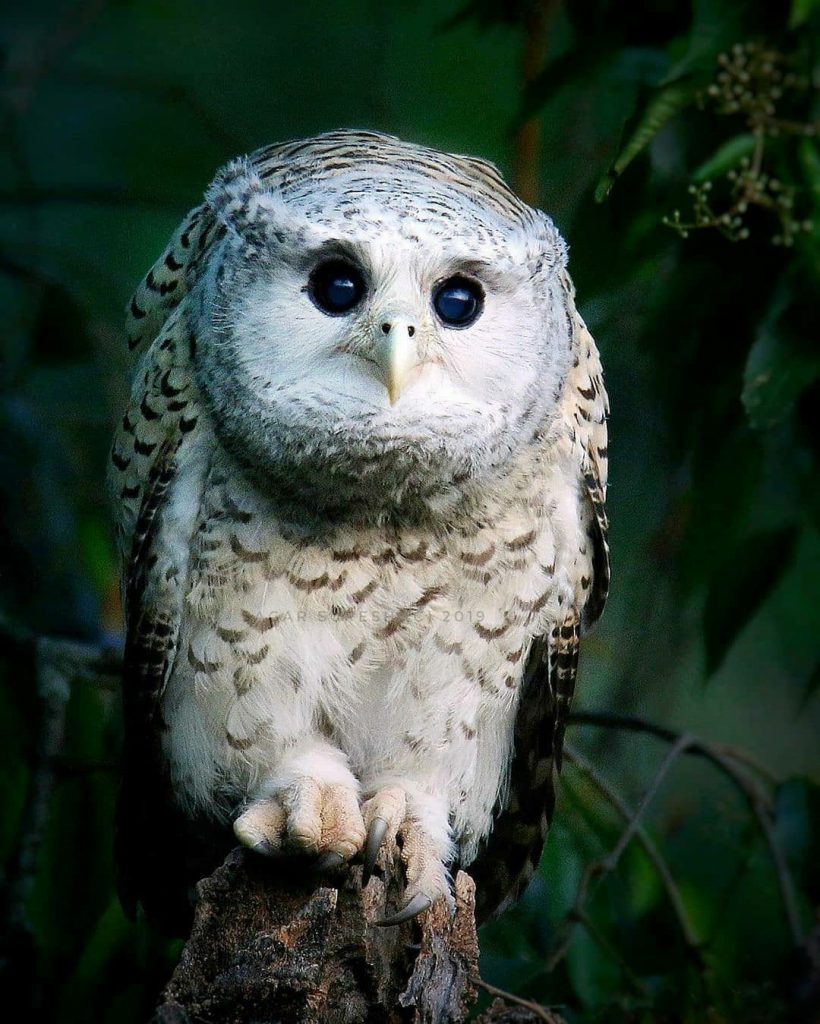
Living in the Western Ghats, we spend a lot of time around owls. Around home, which is in the Nilgiris, we have about 10 species of these Strigiform hunters. The most easily seen ones are the spotted owlets and the brown fish owl that roost near us. The oriental and Indian scops owls make their presence felt at night with their incessant calling. Brown and mottled wood owls make periodic night visits to the jamun and baheda trees that dominate my view from home. Most others, from hawk owls to barn owls to the larger Indian eagle owls are heard and seen regularly around the village and the fields.
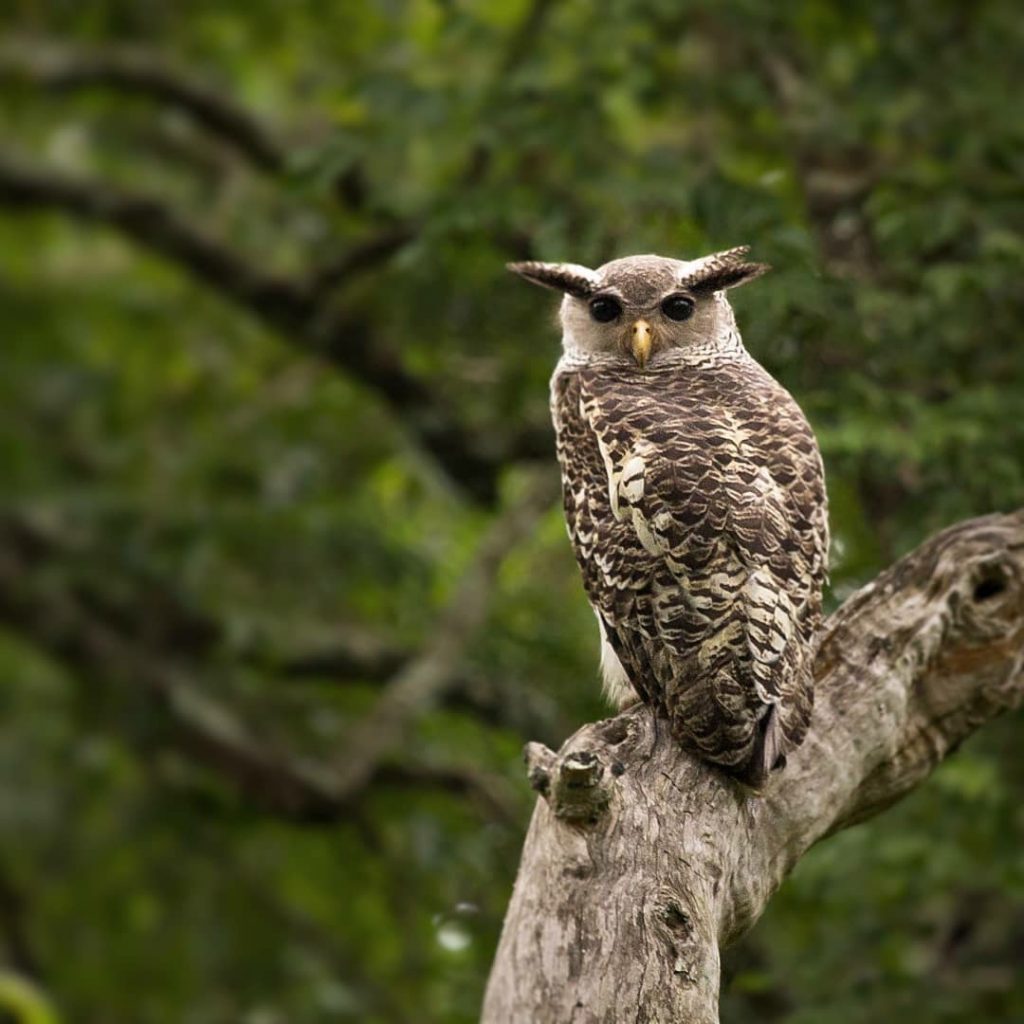
But there is one member that has always fascinated me more than any other bird in the subcontinent. This is the largest of the Indian owls, the spot-bellied or the forest eagle owl. One can assume that its large size should make it easy to see. But there are a few behavioral traits that negate this idea – its adherence to dense forest patches, the habit of constantly switching day roosts, and the biggest issue of all, its preference of sticking to the high canopy. In the past, we have seen this owl in the sal forests of Kanha and the evergreen patches of the north-east. From whatever records we have seen and heard of, this is the top avian predator of the night. These large owls have been recorded bringing down peacocks, flying squirrels, fruit bats, deer fawn, drongos, and pretty much anything else they can get their talons on.
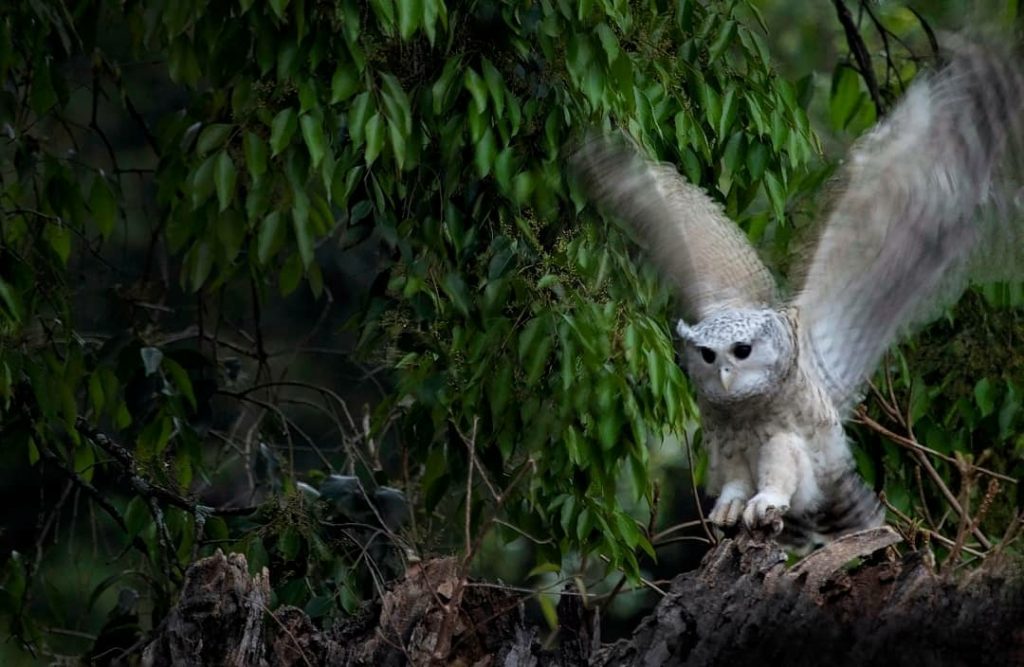
We hear the eerie call of this owl, quite regularly around home, sometimes at very close quarters. Going out looking for owls at night is not an option where I live, especially since it involves entering dense bamboo groves and one has a pretty high chance of running into elephants. This wait lasted quite a few months, especially during this lockdown period when we were glad to be at our home in the woods.
The wait finally ended on one cloudy wet morning. We got a message from my neighbor saying there is a large owl with prominent ears that has killed a jungle fowl in the stream that separates our houses. We knew what it was at once and rushed to the spot. The fact that the owl was holding on to a heavy kill reduced the chance of the owl flying far from the spot where it’s at.
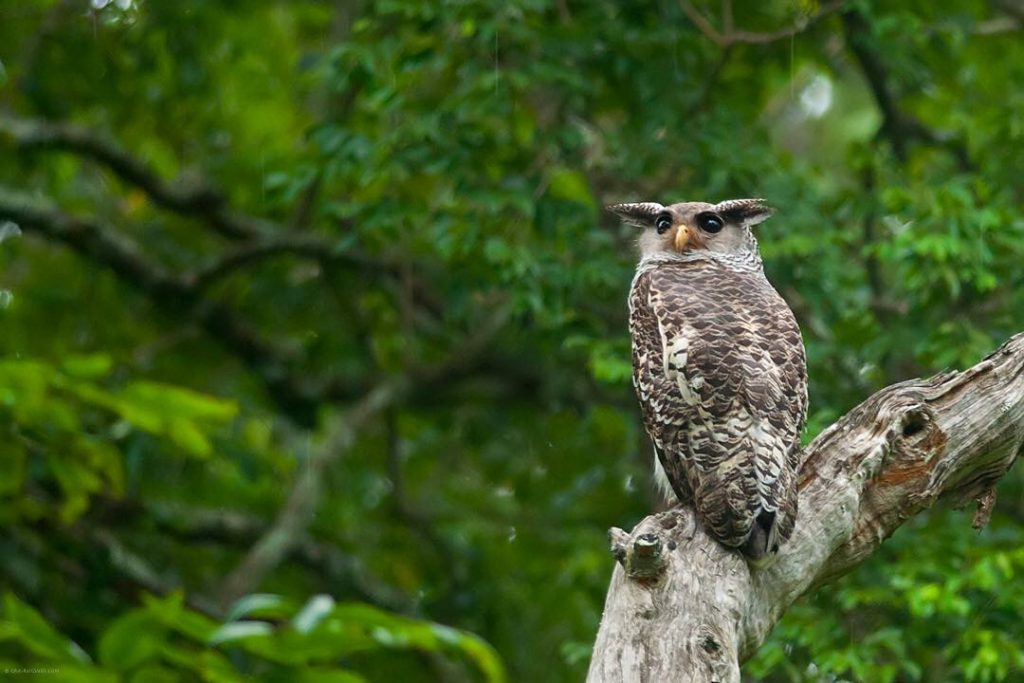
We reached the stream, us on one side with our binoculars, scopes, and cameras on one side and our neighbor on the other, pointing out where the owl was. We moved to an ideal spot from where we had a very good view of the owl and the Malabar grey hornbill that were mobbing it. From our Swarovski ATX 95 scope we could get a clear view of its intricately patterned plumage, the heart spotted undersides, the shadeless dark eyes, and the long ear tufts. The mangled carcass of an adult grey jungle fowl dangled from its talons as it chased the mobbing birds away with wing flaps and open mouth threats. This drama continued for a good hour before the owl managed to establish its dominance and start feeding. It was the moment we were waiting for. The top owl of the night which had eluded us for months was now sitting out in the open in broad daylight with a kill.
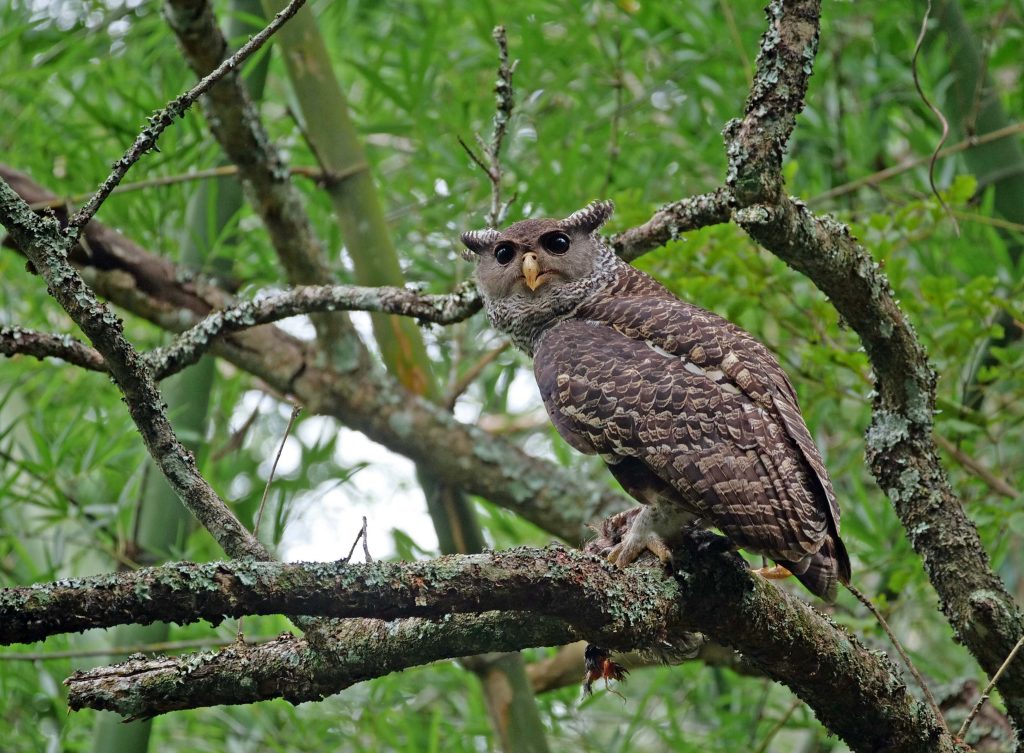
Using our Lumix camera mounted on the scope we could capture some fantastic close up shots despite the fact that we maintained a good 100 meter distance to ensure we do not disturb the owls or interfere with the fascinating drama of the encounter.
It was a memorable four hours that we spent with the owl, a very special entry in our home birding diary. We continue to hear the owl from our verandah every other day, but now, instead of trying to locate it, we enjoy listening to the call and recollect the moments from that perfect morning.
P.S. – In Sri Lankan folklore, the Devil Bird or Ulama is a creature said to emit bloodcurdling human-sounding shrieks in jungles at night. After years of debate, its precise identity is confirmed to be the call of the spot-bellied eagle-owl, that matches the profile.

